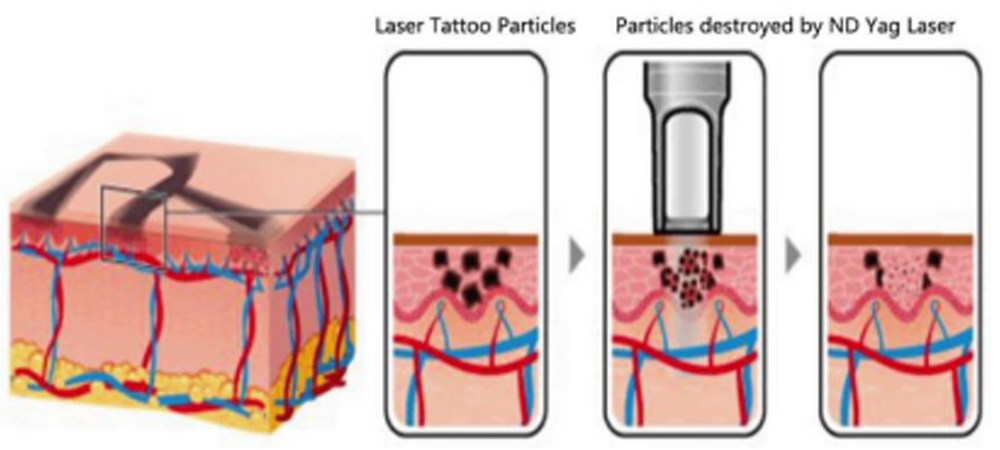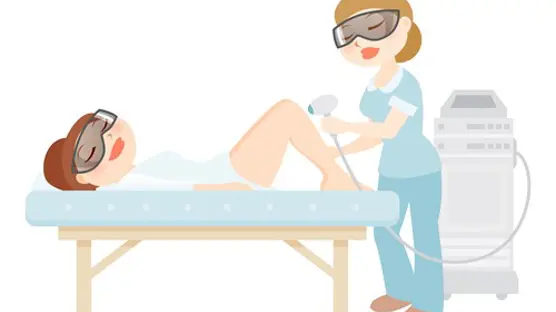What Happens After Q-Switched Laser? A Complete Guide
2025-04-16
Discover what happens after Q-switched laser with CIELLULU’s complete guide. Learn about post-treatment care, expected results, and recovery tips. Our expert insights help you achieve the best outcomes after Q-switched laser. Trust CIELLULU for detailed answers to What happens after Q-switched laser? and make informed skincare decisions.
- Introduction
- How Q-Switched Laser Works
- Common Uses of Q-Switched Laser Treatment
- What Happens After Q-Switched Laser?
- First 24-48 Hours
- First Week
- Long-Term Healing (Weeks to Months)
- Side Effects and Risks of Q-Switched Laser Treatment
- Expected Results and Follow-Up Q-Switched Laser Treatment
- Conclusion
- FAQs
Introduction
Q-Switched lasers are a revolutionary advancement in skin care, offering highly effective treatments for a variety of skin concerns. From tattoo removal to skin rejuvenation, the laser operates by delivering high-intensity pulses of light in a very short time span, usually in nanoseconds. But, as with any cosmetic procedure, understanding the aftercare and healing process is just as important as the treatment itself. This guide will help you navigate the stages of recovery, common side effects, expected results, and more, to ensure you get the best results from your Q-Switched laser treatment.
In this article, we will focus on the recovery process post-treatment, addressing the stages of healing, potential side effects, and tips for long-term results. This will give you an in-depth understanding of what to expect after undergoing Q-Switched laser therapy, as well as how to maximize its effectiveness.
How Q-Switched Laser Works

Q-Switched lasers use extremely short pulses of light to break down pigments in the skin. These lasers are specifically designed to treat deeper layers of the skin without causing harm to the surrounding tissue. The mechanism relies on selective photothermolysis, where specific wavelengths of light target certain chromophores in the skin, like pigment cells or vascular structures.
During the treatment, the laser emits nanosecond pulses, meaning the laser's energy is delivered in incredibly short bursts, causing the pigment to shatter into smaller particles. These broken particles are then absorbed by the body's natural processes, leading to visible improvements in skin tone, texture, and clarity. Whether used for tattoo removal, pigmentation issues, or vascular conditions, Q-Switched lasers are precise and effective, delivering results with minimal side effects when performed correctly.
Common Uses of Q-Switched Laser Treatment
Q-Switched lasers are versatile tools used in a wide range of skin treatments. They are most commonly associated with tattoo removal, but they also address other skin concerns such as pigmentation, age spots, and vascular lesions. Some common applications include:
-
Tattoo Removal: The laser targets the pigment in the tattoo, breaking it down so that the body can naturally expel the ink.
-
Pigmentation Issues: For issues like freckles, sun spots, and melasma, the Q-Switched laser can break down excess melanin, helping to even out the skin tone.
-
Vascular Lesions: This includes conditions like spider veins, where the laser targets and destroys the blood vessels, reducing their appearance.
Regardless of the issue, Q-Switched laser treatments offer an effective, non-invasive solution with little downtime.
What Happens After Q-Switched Laser?

Understanding the recovery process after a Q-Switched laser treatment is essential for achieving optimal results. Each person's experience may vary slightly, but the stages of healing generally follow a predictable path. Let’s break it down into key recovery phases:
First 24-48 Hours
Immediately after the treatment, the treated area may appear red, swollen, and slightly irritated. This is completely normal and is a sign that the body is responding to the treatment. For some individuals, mild discomfort or a sensation similar to a sunburn is also common. It is essential to keep the treated area clean and avoid any direct sun exposure during this phase. In most cases, patients can return to their daily routine, though they should be cautious about exposing their skin to any harsh environmental factors.
First Week
In the first week, the redness and swelling usually begin to subside, though some individuals might notice the treated area becoming darker or developing crusting. This is part of the natural healing process, especially when treating pigmentation or tattoos. It's crucial not to pick or peel the skin, as this can lead to scarring. At this stage, following the aftercare instructions carefully—such as moisturizing and avoiding sun exposure—is key to a successful recovery.
Long-Term Healing (Weeks to Months)
The long-term healing process can take anywhere from several weeks to a few months, depending on the depth of the treatment and the individual’s skin. Pigmentation may begin to fade gradually, and tattoos may show signs of fading or complete removal. The skin continues to heal, and any scarring or discoloration should begin to fade. It’s important to continue protecting the treated area from the sun and to schedule follow-up treatments as recommended by your dermatologist.
Side Effects and Risks of Q-Switched Laser Treatment
While Q-Switched lasers are considered safe and effective, like any medical treatment, there are potential side effects and risks. Some of the most common side effects include:
-
Redness and Swelling: Mild redness and swelling in the treated area are common and usually subside within a few hours to days.
-
Pigment Changes: In rare cases, the treatment may cause either hyperpigmentation (darkening of the skin) or hypopigmentation (lightening of the skin), particularly in individuals with darker skin tones.
-
Blistering: If the skin is over-treated or exposed to excessive heat, there is a risk of blistering.
-
Scarring: Although rare, improper aftercare or overly aggressive treatment can lead to scarring. This is why it is important to follow aftercare guidelines.
To minimize the risk of complications, always choose a qualified professional to perform the treatment and follow their aftercare instructions carefully.
Expected Results and Follow-Up Q-Switched Laser Treatment
The expected results from a Q-Switched laser treatment can vary based on the skin concern being addressed. In most cases, patients can expect to see noticeable improvements in skin tone, texture, and the reduction of pigmentation or tattoos.
-
Tattoo Removal: Multiple sessions are typically required to see significant results, as the body needs time to expel the ink gradually.
-
Pigmentation Treatments: Fading of freckles, sunspots, and other pigmentation issues can be seen after one or two sessions, though results improve over time.
-
Vascular Lesions: Spider veins and similar issues may improve after one session, though follow-up treatments may be necessary.
Follow-up treatments are usually scheduled every 4-6 weeks, depending on the area being treated and the individual’s skin response.
Conclusion
Q-Switched laser treatments offer a highly effective, non-invasive option for a variety of skin concerns, from tattoo removal to pigmentation issues. Understanding the recovery process and potential side effects is essential to achieving the best results and ensuring that your skin heals properly.
After undergoing treatment, always follow the aftercare instructions provided by your professional to minimize complications and maximize the effectiveness of the laser. If you are seeking high-quality and professional laser beauty equipment, CIELLULU is an industry leader with over 30 years of experience. Their advanced, customizable laser devices are designed to deliver top-tier results, with excellent customer service and flexible maintenance plans.
For more information on CIELLULU’s advanced laser devices, visit their official website at CIELLULU Laser, and explore the wide range of options available for your needs.
FAQs
Q: How long does it take to recover from a Q-switched laser?
A: Initial redness subsides in 1-3 days; full healing may take 1-2 weeks.
Q: Does Q-switched laser hurt?
A: Mild discomfort, often described like a rubber band snap. Numbing cream can help.
Q: How many sessions are needed for tattoo removal?
A: Typically 6-12 sessions, spaced 6-8 weeks apart.
Q: Can Q-switched laser treat acne scars?
A: Yes, but fractional lasers may be more effective for deep scars.
Q: Is Q-switched laser safe for all skin types?
A: Generally safe, but darker skin has a higher risk of pigmentation changes.
Tags
tattoo removal q switch
tattoo removal q switch
q switch yag Brazil for sale
q switch yag Brazil for sale
latest laser hair removal machine
latest laser hair removal machine
epilation diode laser
epilation diode laser
laser hair removal machine in San Francisco
laser hair removal machine in San Francisco
ipl device price
ipl device price
Menu
Recommended for you

Essential Starting a Beauty Business Checklist for 2025

Non-ablative laser and phototherapy skin rejuvenation principles and common technology equipment comparison

IPL Vs Laser

It has been more than a month since the car accident. Why has the color of the scratched area on my face not faded yet?
Prdoucts Categories
You may also like

CIELLULU Q-Switched ND:YAG Laser LIFFAN Q6
Pigment Removal & Tattoo Removal & Skin Rejuvenation

CIELLULU S500 1500W Diode Laser Hair Removal & Skin Rejuvenation Machine
Diode Laser Painless Hair Removal Machine is especially effective on hair follicle melanocytes without causing damage to the surrounding tissue.

CIELLULU MULA K2 BroadBand Light DPL beauty machine for skin care and hair removal
ACNE/Pigmentation/Vascular Lesions Treatment, Skin Rejuvenation and Hair Removal.
Get in touch with us
If you have any comments or good suggestions, please leave us a message. Later, our professional staff will contact you as soon as possible.
Copyright © 2024 CIELLULU. | Privacy Policy • Terms and Conditions
















